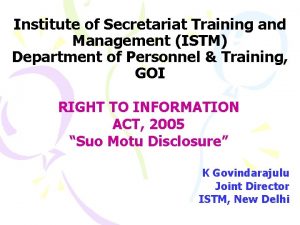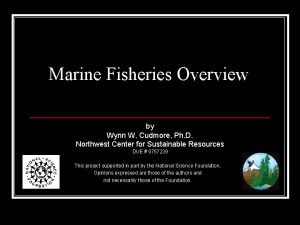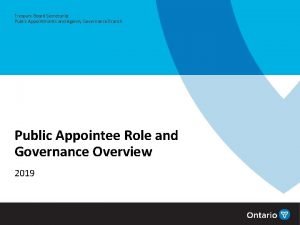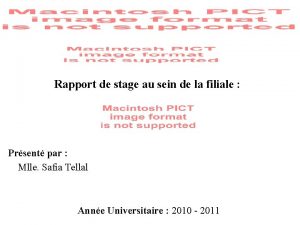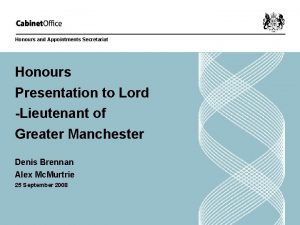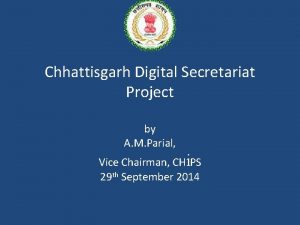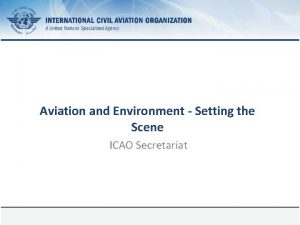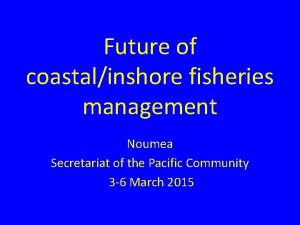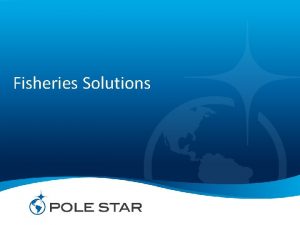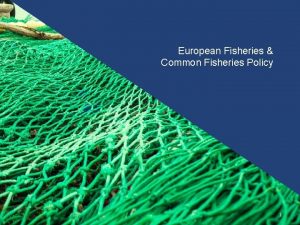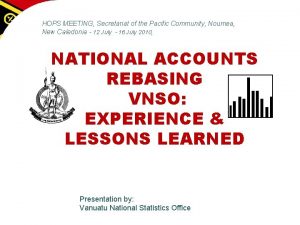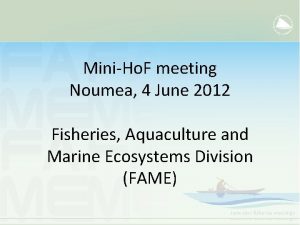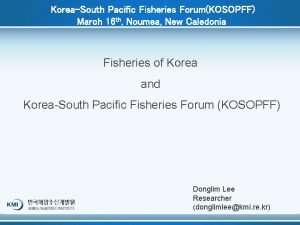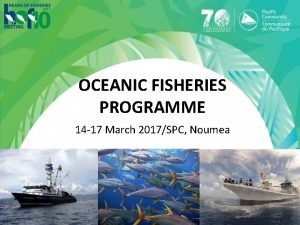Future of coastalinshore fisheries management Noumea Secretariat of








- Slides: 8

Future of coastal/inshore fisheries management Noumea Secretariat of the Pacific Community 3 -6 March 2015

Facilitator as an excoastal/ins hore fisherman

Building on existing/past activities Including: • Apia policy • FFA/SPC Future of Fishing • IUCN call for action • FAME Strategic Plan • SIDS conference outcomes • MSG roadmap

Focus of the Workshop Management of wild capture coastal/inshore fisheries, predominantly using CEAFM • Effective management includes maximising development opportunities from fisheries • Aquaculture, stock enhancement and alternative livelihoods (to fishing) are indirectly linked to fisheries management but will only be considered in terms of their direct impact on coastal/inshore fisheries management

Key Objectives • Improved understanding of the successes and challenges of CEAFM, lessons learned, and what needs to be done to roll out effective management at an appropriate scale (national/sub national) • Increased knowledge of the issues, practices and tools used in successful CEAFM • Development of pathways for change including key roles for stakeholders and linkages between them that will support improved management

Output of the workshop A document that will: • outline a non-prescriptive suite of approaches to improve the status of CEAFM in SPC countries and territories; • identify roles for various stakeholders including interactions between them; • identify resource needs, including from donors, NGOs and national budgets; • provide a framework that can be used to develop effective monitoring and evaluation; and • be forwarded to HOF for endorsement and the FFC Ministerial meeting seeking higher level support

Format of the workshop • Part 1. Current situation of CEAFM • Part 2. Increased knowledge of the issues, practices and tools used in successful CEAFM • Part 3 Development of a blueprint for improved CEAFM using a framework based on theory of change, including key roles for stakeholders and linkages between them,

Other features of the workshop • Plenary presentations • Break out groups based on sub-regions (see names on sheet on Conference Centre door) • Separate group for NGOs and members of CROP agencies • Adaptive management - as the workshop progresses may need to change the workshop programme to best suit needs of participants and achievement of output
